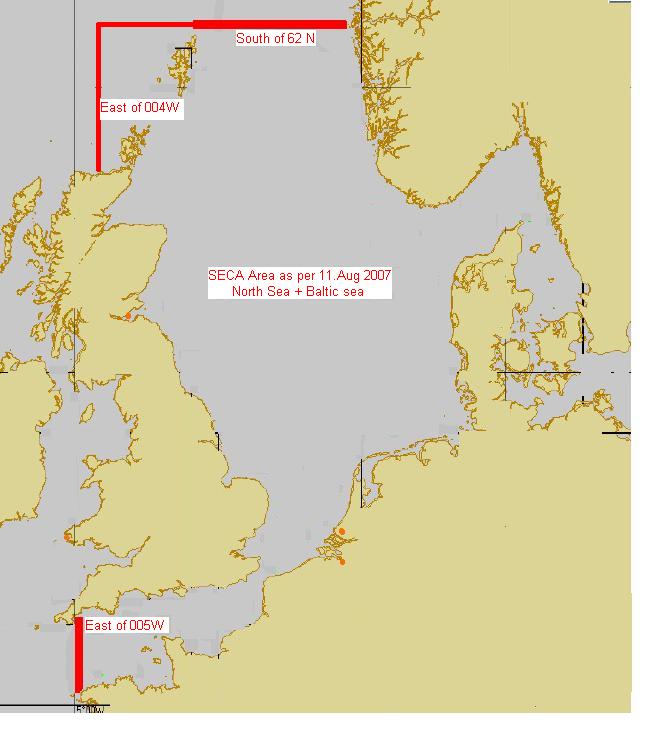Implementation dates, compared with those of MARPOL are as follows:
- 19 May 2006 Entry into force of Baltic Sea SOx Emission Control Area (SECA) under IMO (1.5% limit)
- 11 August 2006 Baltic Sea SECA enforceable by EU member states
- 11 August 2007 North Sea SECA enforceable by EU member states (1.5%) limit
- 21 November 2007 North Sea SECA enters into force under IMO
- 01 January 2010 0.1% limit for vessels at berth in EU ports comes into force
NOTE:
Due to several misunderstandings with regard to MDO/ MGO Sulphur issues, please be advised as follows:
Directive version - 1999/ 32.
Under the previous version (Directive 1999/32), all marine distillates were defined as (marine) gas oil, making no distinction between various grades of marine diesel oils (MDO) and marine gas oils (MGO). Since its application date in July 2000, ships were only allowed to burn marine distillates with a maximum Sulphur content of 0.2% while sailing within EU territory.
Directive Version – 2005/ 33
Directive 2005/33, however, makes a distinction between MDO and MGO. The maximum allowable Sulphur content for MGO remains at 0.2% until January 2008, when it will fall to 0.1%. But for MDO, the limit has been raised from 0.2% to 1.5%, which means ships are again free to buy and use MDO with up to 1.5% Sulphur. ''
